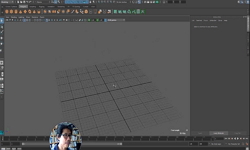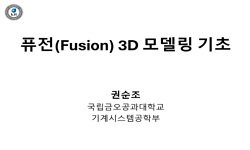Purpose : This study aimed to compare and evaluate between the efficiency of two respective devices, 3D-bolus and step-bolus when the devices were used for the treatment of patients whose chest walls were required to undergo the electron beam therapy ...
http://chineseinput.net/에서 pinyin(병음)방식으로 중국어를 변환할 수 있습니다.
변환된 중국어를 복사하여 사용하시면 됩니다.
- 中文 을 입력하시려면 zhongwen을 입력하시고 space를누르시면됩니다.
- 北京 을 입력하시려면 beijing을 입력하시고 space를 누르시면 됩니다.
변형 근치적 유방절제술 시행 환자의 방사선 치료 시 3D-bolus와 step-bolus의 비교 평가 = Comparison and evaluation between 3D-bolus and step-bolus, the assistive radiotherapy devices for the patients who had undergone modified radical mastectomy surgery
한글로보기https://www.riss.kr/link?id=A102493059
-
저자
장원석 ; 박광우 ; 신동봉 ; 김종대 ; 김세준 ; 하진숙 ; 전미진 ; 조윤진 ; 정인호 ; Jang, Wonseok ; Park, Kwangwoo ; Shin, Dongbong ; Kim, Jongdae ; Kim, Seijoon ; Ha, Jinsook ; Jeon, Mijin ; Cho, Yoonjin ; Jung, Inho
- 발행기관
- 학술지명
- 권호사항
-
발행연도
2016
-
작성언어
Korean
- 주제어
-
자료형태
학술저널
-
수록면
7-16(10쪽)
- 제공처
-
0
상세조회 -
0
다운로드
부가정보
다국어 초록 (Multilingual Abstract)
Purpose : This study aimed to compare and evaluate between the efficiency of two respective devices, 3D-bolus and step-bolus when the devices were used for the treatment of patients whose chest walls were required to undergo the electron beam therapy after the surgical procedure of modified radical mastectomy, MRM. Materials and Methods : The treatment plan of reverse hockey stick method, using the photon beam and electron beam, had been set for six breast cancer patients and these 6 breast cancer patients were selected to be the subjects for this study. The prescribed dose of electron beam for anterior chest wall was set to be 180 cGy per treatment and both the 3D-bolus, produced using 3D printer(CubeX, 3D systems, USA) and the self-made conventional step-bolus were used respectively. The surface dose under 3D-bolus and step-bolus was measured at 5 measurement spots of iso-center, lateral, medial, superior and inferior point, using GAFCHROMIC EBT3 film (International specialty products, USA) and the measured value of dose at 5 spots was compared and analyzed. Also the respective treatment plan was devised, considering the adoption of 3D-bolus and stepbolus and the separate treatment results were compared to each other. Results : The average surface dose was 179.17 cGy when the device of 3D-bolus was adopted and 172.02 cGy when step-bolus was adopted. The average error rate against the prescribed dose of 180 cGy was -(minus) 0.47% when the device of 3D-bolus was adopted and it was -(minus) 4.43% when step-bolus was adopted. It was turned out that the maximum error rate at the point of iso-center was 2.69%, in case of 3D-bolus adoption and it was 5,54% in case of step-bolus adoption. The maximum discrepancy in terms of treatment accuracy was revealed to be about 6% when step-bolus was adopted and to be about 3% when 3D-bolus was adopted. The difference in average target dose on chest wall between 3D-bolus treatment plan and step-bolus treatment plan was shown to be insignificant as the difference was only 0.3%. However, to mention the average prescribed dose for the part of lung and heart, that of 3D-bolus was decreased by 11% for lung and by 8% for heart, compared to that of step-bolus. Conclusion : It was confirmed through this research that the dose uniformity could be improved better through the device of 3D-bolus than through the device of step-bolus, as the device of 3D-bolus, produced in consideration of the contact condition of skin surface of chest wall, could be attached to patients' skin more nicely and the thickness of chest wall can be guaranteed more accurately by the device of 3D-bolus. It is considered that 3D-bolus device can be highly appreciated clinically because 3D-bolus reduces the dose on the adjacent organs and make the normal tissues protected, while that gives no reduction of dose on chest wall.
동일학술지(권/호) 다른 논문
-
하지 연부조직육종을 위한 방사선치료기술 별 선량평가 연구
- 대한방사선치료학회
- 이솔민
- 2016
-
RPM SystemTM을 이용한 호흡 관찰의 유용성 평가
- 대한방사선치료학회
- 박현준
- 2016
-
두경부환자의 토모테라피 치료시 SETUP 변화율에 대한 후향적 평가
- 대한방사선치료학회
- 하태영
- 2016
-
두경부암 환자의 양성자 치료 시 사용하는 자체 제작한 BoS Frame 고정장치의 선량학적 유용성 평가
- 대한방사선치료학회
- 김광석
- 2016




 ScienceON
ScienceON






